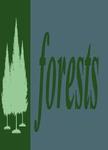版权所有:内蒙古大学图书馆 技术提供:维普资讯• 智图
内蒙古自治区呼和浩特市赛罕区大学西街235号 邮编: 010021

作者机构:Harbin Normal Univ Coll Geog Sci Harbin 150025 Peoples R China Heilongjiang Wuyiling Wetland Ecosyst Natl Observa Yichun 153000 Peoples R China
出 版 物:《FORESTS》 (Forests)
年 卷 期:2025年第16卷第1期
页 面:133-133页
核心收录:
基 金:National Natural Science Foundation of China Natural Science Foundation of Heilongjiang Province of China [TD2023D005] Key Program of Academic Innovation of Harbin Normal University [HSDSSCX2020-02] 42071079 41671100
主 题:distribution pattern forest swamp succession organic carbon and nitrogen components nematode community structure and diversity soil depth
摘 要:The forest swamp ecosystem, as a special wetland ecosystem, is a key link in the material cycle and an important carbon sink in the carbon cycle. The global carbon cycle is of great significance, but the impact of forest swamp succession and soil depth on soil active organic matter and nematode community structure and diversity is unclear. This study used the space instead of time method to investigate the succession process of forest swamps from grasslands (WC) and shrubs (WG) to forests (WS) in national nature reserves. The results showed that during the forest succession process, the dominant nematode communities in the WC and WG stages were dominated by the genera Apis and Labroidei, while the dominant genera increased in the WS stage. The total abundance of nematodes increased, and the number of groups was ordered WG WC WS. The diversity in soil nematode communities according to Shannon-Wiener (H ), Pielou (J), and Trophic diversity (TD) was WS WG WC, which is related to vegetation, soil physical and chemical properties, and microbial community structure. The maturity index (MI) was WG WS WC. The soil food web was dominated by bacterial channels and had characteristics in forest metabolic activity and regulation ability. At different soil depths, there were significant differences in the community, with species such as the spiny cushioned blade genus being key. The number and group size of nematodes varied from 0-10 cm 10-20 cm 20-30 cm. The relative abundance of feeding nematodes changed with depth, while diversity indices such as H , J, and TD decreased with depth. Ecological function indices such as MI and PPI showed depth variation patterns, while basic indices (BI) and channel indices (CI) showed significant differences. In terms of soil variables, during the forest succession stage, soil organic carbon (SOC), soluble organic nitrogen (DON), easily oxidizable organic carbon (ROC), microbial biomass carbon (MBC), and microbial biomass ni